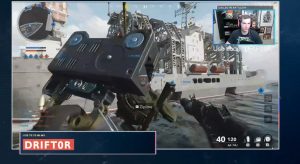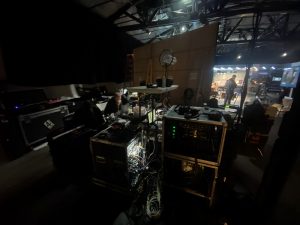Ross Production Services Supplies Tech Backbone for Call of Duty: Cold War Multiplayer Reveal Live Stream
Boombox, NCompass were also involved in the project
Story Highlights
Last month, Activision Blizzard Esports participated in one of its most important marketing opportunities of the year, Call of Duty: Cold War Multiplayer Reveal. Since a massive, in-person event wasn’t possible, Ross Production Services (RPS) provided the technical solution and key personnel for the four-hour live stream and helped integrate 34 remote contributors on Twitch and YouTube.
“This show reached a total peak concurrent viewership of 1.1 million,” says Cameron Reed, business development manager, esports, Ross Video. Noting a partnership with NCompass and Boombox on the project, he adds, “All three parties worked very closely together to make sure the event would be a success both creatively and technically.”
Gaming Family: 34 Influencers Join the Show From Twitch, YouTube

Joe “MerK” Deluca (left) and Clint “Maven” Evans explore the intricacies of Call of Duty’s new game mode.
Always improving the Call of Duty franchise for esports fanatics around the globe, Activision had big plans for the announcement of this latest update, including live gameplay and commentary from 34 remote contributors, which were divided into two teams of 17 competitors. RPS deployed a Ross Video Ultrix router to streamline the production and allow a particular team to be displayed with the push of a button.
“We were able to automate a simple workflow where we brought in different sources depending on which team we wanted to show,” Reed explains. “This workflow also enabled us to do the show on a smaller switcher with fewer total inputs available than the number of inputs the show required.”

34 influencers from Twitch and YouTube participated in Call of Duty: Cold War Multiplayer Reveal live stream.
While filling the needs of the live stream, the smaller production switcher also proved beneficial and cost-efficient for both NCompass and BoomBox. The technology handled the production at its core, but RPS’s flexible solutions allowed inclusion of on-the-fly content from any destination.
“To keep the show as authentic to the community as possible,” says Reed, “they wanted the influencers to have no additional setup other than their normal streams, which created the challenge of pulling [the feeds] in low latency. We were also able to easily load feeds from any web source into our environment, so, if somebody wanted to start bringing in another influencer that wasn’t previously planned for, we could easily accommodate it without anything from the influencer themselves.”
Rest of the Tech: Ross Provides Onsite Truck, Seven Studio Cameras
The remote contributors were monitored by an RPS technician in the cloud, and the director of the show had access to four simultaneous multiviewers from home. Communication was enabled by an intricate system that involved a Clear-Com Eclipse HX Matrix intercom in Connecticut.
“The director was able to use a virtual intercom panel on his tablet device,” Reed explains. “When they needed to use IFB, his audio would go back to Connecticut, then back to the talent in Los Angeles with less than 250 ms of latency.”
RPS was responsible for traditional, brick-and-mortar equipment as well. An onsite truck was at work in the compound, and, in the studio, seven studio cameras captured the on-air team of two esports players: Joe “MerK” Deluca and Clint “Maven” Evans.
Besides the technology, RPS supplied a majority of the offsite crew. BoomBox provided three crew members (graphics operator, producer, and director), but RPS hired a technician to manage the truck, a video shader for the in-studio cameras, two replay operators and an A1 audio mixer in Connecticut, and two remote XPression graphics operators.

